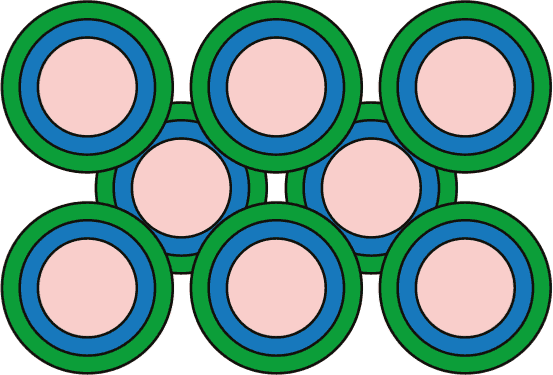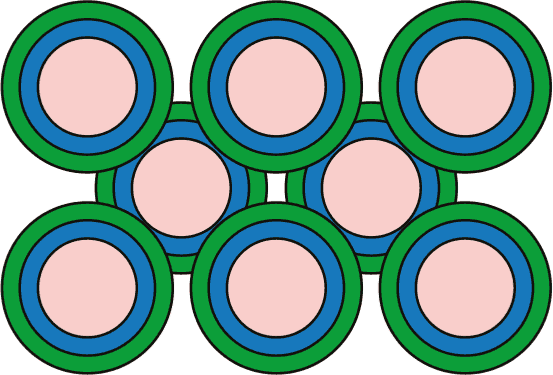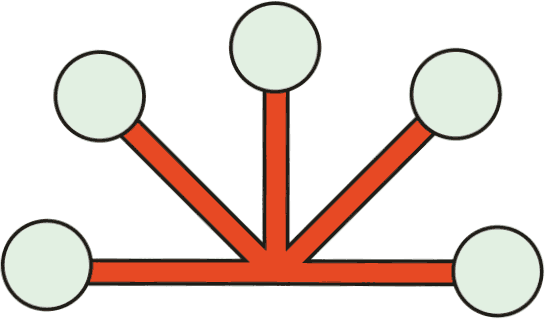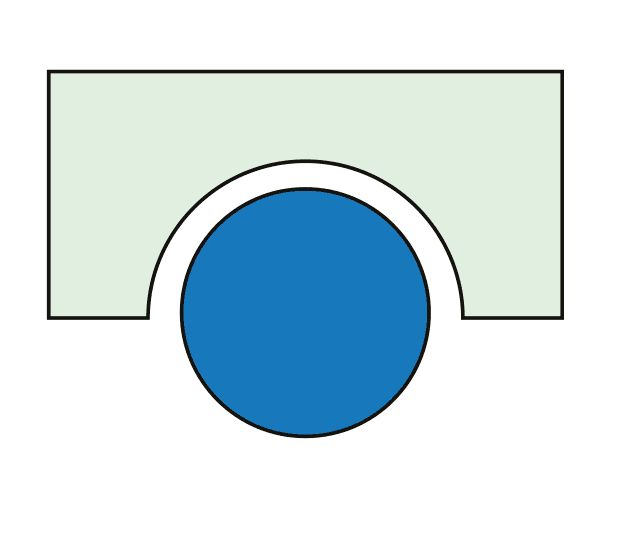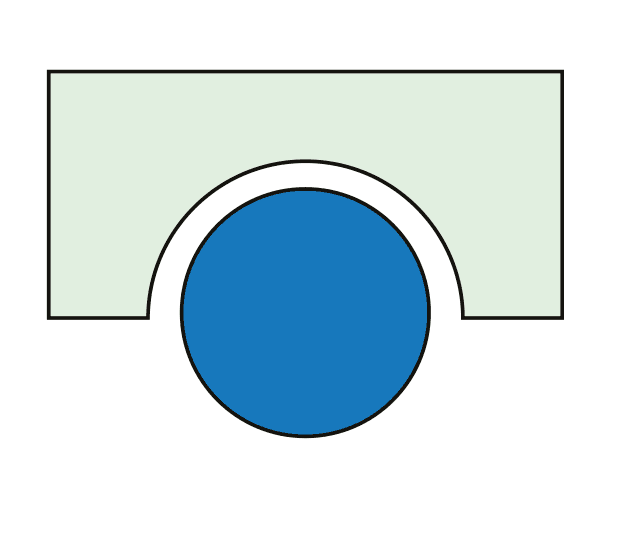The Operating as One Issue
Creating a foundation of shared knowledge for everyone to work from
Filter tactics
Other issues
Not sure where to start? Select one or more tags below to filter the content of this zine:
Looking for:
- Nuts and Bolts
- Wrenches and Hammers
- Factory Favorites
- Recipe Under Development
Kool-Aid Serving Size:
- Kool-Aid Gulp
- Kool-Aid Sip
My role:
- Company Leader
- Crossfunctional Influencer
- Domain Expert / Team Lead
- Operator
Your chosen filters show 21 tactics of 21!
Go!Get more details on zine filters here
Looking to workshop these tactics? here.

Not sure where to start? This guide can help.
Coach Bill Walsh took the San Francisco 49’s from the worst team in football to three-time Super Bowl champions in three years. He started by implementing what he called the “Standard of Performance,” and it didn’t have much to do with blocking or tackling or passing. It had to do with showing up on time to practice, keeping shirts tucked in, and working hard. Those who answered the phones for the team were given a script to use with language that better reflected the team’s new standard of professionalism. He recounts it all in his book, The Score Takes Care of Itself, based on his approach of “direct(ing) our focus less to the prize of victory than to the process of improving — obsessing, perhaps, about the quality of our execution and the content of our thinking; that is, our actions and attitude. I knew if I did that, winning would take care of itself.”
This issue is about inputs. It’s about clarifying and documenting the foundational knowledge your company is operating with and making it common knowledge so that everyone can use it in their own work every day. If everyone is working with the same inputs, it’s more likely that they’ll work together towards shared outcomes, too.
This issue covers the building blocks of shared knowledge and how to make sure it makes its way into every corner of your organization. Doing a great job will set your company up to have the globally-optimal outcome take care of itself.
Not sure where to start? Select one or more tags below to filter the content of this zine:
Looking for:
- Nuts and Bolts
- Wrenches and Hammers
- Factory Favorites
- Recipe Under Development
Kool-Aid Serving Size:
- Kool-Aid Gulp
- Kool-Aid Sip
My role:
- Company Leader
- Crossfunctional Influencer
- Domain Expert / Team Lead
- Operator
Get more details on zine filters here
Filter descriptions
Looking for:
-
Nuts and Bolts
Foundational mechanisms to get started with. Most great organizations rely on their own version of this.
-
Wrenches and Hammers
Supplemental mechanisms to do more with. Many great organizations use these to close gaps or respond to challenges.
-
Factory Favorites
Lesser-utilized tactics that more companies could benefit from trying.
-
Recipe Under Development
Research on best practices and potential impact is still underway.
Kool-Aid Serving Size:
-
Kool-Aid Gulp
The highest-impact, furthest-reaching tactics for everyone to engage with.
-
Kool-Aid Sip
Nice-to-have or opt-in tactics for smaller groups to experiment with.
My role:
-
Company Leader
Someone with direct influence over the direction of the company and what is brought onto the company stage.
-
Crossfunctional Influencer
Someone who makes decisions across multiple teams or functional groups.
-
Domain Expert/Team Lead
Someone with strong command of a specific topic and/or the leader of a functional group.
-
Operator
Anyone getting work done with a command of the company’s values/standards and the inclination uphold them.
ON THE SAME PAGE ABOUT
The list of things that everyone at your company would ideally have committed to memory. Do whatever you can to make these stick. Cite them in work and encourage your team to do the same.
Customer Obsession Moment
When a user decides they can’t live without us
- Many companies take the lens of the ‘magic’ moment, but the best want their customers to experience more than delight. They want them to experience obsession, desire, or a desperate need to have them in their user’s lives.
- You can let your customers tell you what their obsession moment is and you can help create it through the way your product works. Consider what you want your customer obsession moment to reinforce (Acquisition? Retention? Loyalty? Referrals?) and build from there.
- There should probably be only one of these.
HOT TIPS
- Shopify defines this as a user’s first sale
- Lambda School’s is when a student gets hired. You see people from the company tweeting about this all the time.
- Facebook’s early metric was “7 friends in 10 days”
- Slack’s: was 2,000 team messages (90% of teams that reached this milestone didn’t churn)
- Isabella Stewart Gardner Museum director, Anne Hawley, called the patron’s first step through the modest facade and into the lush courtyard garden an “epiphanic moment”
COMPANY STORY
- Circulate examples of customers experiencing this to make the joy more real.
- Add it as a metric to your company dashboard.
ROLLOUT PLAN
- This article from First Round Review describes Superhuman’s strategy to orient their product around early users that reported feeling ‘very disappointed’ if they could no longer use superhuman, even though it only accounted for 22% of their total user-base at the time.
RESOURCE
Customer Very Bad Day Moment(s)
When we meaningfully break something for a user
- User trust is earned through a series of consistently positive interactions with the brand, and can be lost with a single negative one. There are likely a set of things that your company can do that would give a great many of your customers a bad day (for software companies, this might be a service outage or data loss, for an e-commerce company, this might be a lost package or customer dispute).
- Remember, customers that have a bad day might not want to be customers anymore. They might say bad things about you to other customers or potential customers. This tactic helps ensure that everyone at your company is doing everything they can to prevent those bad days.
- There can be 3-5 of these.
HOT TIPS
- Uber’s surge pricing can be considered a way to prevent the delayed ride to the airport that means you miss your flight.
- Airbnb’s 11-Star Framework (visualized nicely here) lays out what customers might experience to leave a review of various stars. Even though the rating system only goes up to 5 stars, the team laid out a series of totally extreme customer scenarios that would get them up to 11 stars (“showing up at the airport and Elon Musk says “you are going to space.”). Get into your customer’s shoes by considering what could incite a totally outrageous experience- from utter bliss to total catastrophe. What would your -11 star rating be?
COMPANY STORY
- Circulate examples of customers experiencing this make the pain more real.
ROLLOUT PLAN
Things that must get done
Our top priorities, right now
- As a litmus test, pull people aside in the proverbial hallways and ask them what they think the top priorities of the company are. The goal is that everyone has the same answer. If responses are all over the map, it’s time for improvements to either message itself or the way it’s been communicated.
- The right number is as many as your team can keep track of. You can have some very nuanced ones, or many simple ones. You can also make nuanced ones feel simple through the way you communicate them (ie- your special taglines or clever memes).
HOT TIPS
- Whenever these change, make a big deal of it. Do a presentation at Company All Hands, send a note out to the team, and/or add them to your company Wiki (with a changelog!). (These should be easy to reference later if people forget)
ROLLOUT PLAN
Values breaches
The thing our company will never, ever compromise on.
- Most operating norms at a company should be in constant evolution, but some things are sacred. These are those things.
HOT TIPS
- Ever see an ad on the homepage of Craigslist or Google? Imagine the revenue implications. But also imagine the implications for the soul of the company.
- Substack vows to never use algorithms that optimize for engagement. It might be good for business, but it would threaten their core value around preserving the sacredness of the direct writer-reader relationship.
COMPANY STORY
Must not churn
Customers we should do everything we can to keep
- These are real, live, in-the-flesh, users of your product/service. They are your investors or other stakeholders in the success of the company.
- When someone at your company sees a request with this user’s name on it, their heart should skip a beat.
- These shouldn’t change very often.
HOT TIPS
Consider putting some processes in place to prevent churn for these users. Some ideas:
- A single point of contact
- Well-defined internal escalation paths (technical, product, business)
- Tagging in your email ticketing systems with faster SLAs
- Assigning a leadership sponsor (and a cadence for that leader to check in)
ROLLOUT PLAN
Metrics that matter
Our company’s guiding metrics
- Every company should have at least one metric that they stare at incessantly. This is your “metric that matters.”
- Use the SMART framework for metrics (Specific, Measurable, Achievable, Results-Oriented, Targeted). “Targeted” is often overlooked but it is critical.
- If your metrics are not helping you or meaningfully influencing behavior, they are not good metrics.
- Metrics can be about driving impact (outcome metrics) or driving operational work (input metics)
- There should probably be a single “North Star Metric” with 3-5 additional supporting metrics. You may also want to consider counter-metrics (or pairing metrics) that keep you from over-rotating on a singular metric. Remember. “if the highest aim of a captain were to preserve his ship, he would keep it in port forever” -Thomas Aquinas
- Early on, consider orienting around great experiences of individual users versus averages across all users. This may mean looking at performance of top user(s) only, seeing if a single customer can beat its previous best on a metric (or get overtaken by another user), or maintaining some bar for activity over an increasingly sustained period of time. (see Company Story from Oxo below)
HOT TIPS
- Facebook’s is MAU’s
- Slack’s is DAU’s
- Stripe’s is processing volume
- Oxo optimizes for ‘streaks’ for the highest spend/earn for a currently active user. The #1 streak user will always churn, so keeping the metric going in the right direction requires both retaining them and having a solid #2+ users lined up to take their place.
- In the early days at Front, the team obsessed over revenue (as a signal that they were building something users actually wanted). Everyone at the company knew today’s and yesterday’s revenue like the back of their hand. For over a year, CEO Mathilde Colin sent an email to the entire company with yesterday’s revenue number.
- Is there a non-SMART metric that could be useful? Or at least activate the warm-and-fuzzies? On Deck has “wedding invitations exchanged between community members” metric that matters. It’s not easily measurable so not often calculated and it’s not targeted, but it sure is heart-warming and an excellent aspirational signpost.
COMPANY STORY
Company targets
The number we are all working to hit, together
- Make these meme-able if you can. Targets of 0 or 100 are easy to remember.
- To further incentivize integrating targets into everybody’s day-to-day work and create urgency to hit them, some companies pay out a company bonus based on progress on targets. This can come in the form of a flat amount for everyone or a flat percentage on top of existing comp.
HOT TIPS
- In 2012, Facebook incited a company-wide push towards reaching 1 billion global users.
- Peloton has a target of 100% NPS (talk about ambitious targets)
- When new president Joe Biden took office in 2021 with a mission to get the still-spreading Coronavirus under control, he set a very public target of “100 million shots in first 100 days”
COMPANY STORY
External moment briefing
How do we prepare to think and talk about big company moments
There’s more I’d like to learn before I make any suggestions. If you have any stories, learnings or best practices you’d like to see included, I hope you’ll leave a comment.

GEAR TURN
TEMPLATE
Working norms
What is expected of every employee on an average day of work
There’s more I’d like to learn before I make any suggestions. If you have any stories, learnings or best practices you’d like to see included, I hope you’ll leave a comment.

GEAR TURN
- Netflix’s famous “culture deck” made ripples because it clarified just how seriously they took their culture of high performance. “Like every company, we try to hire well. Unlike many companies, we practice: adequate performance gets a generous severance package… We’re a team, not a family. Netflix leaders hire, develop and cut smartly, so we have stars in every position.” Lots of other expectations about performance and how employees are expected to act (see: Operating Principles).
- Yankees owner, George Steinbrenner, implemented a hair policy in 1973 reportedly after noticing that many of his players had their hair covering their numbers on their jerseys while the Star Spangled Banner ceremoniously played. The rule stated all players, coaches and male executives are forbidden to display any facial hair other than mustaches (except for religious reasons), and scalp hair may not be grown below the collar. Long sideburns and ‘mutton chops’ are not specifically banned.” When team star Don Mattingly refused to cut his hair, he lost his starting position until he trimmed it.
COMPANY STORY
Employee Code of Conduct
How everyone is expected to behave and treat each other
There’s more I’d like to learn before I make any suggestions. If you have any stories, learnings or best practices you’d like to see included, I hope you’ll leave a comment.

GEAR TURN
- Flutter’s Code of Conduct states “we expect Flutter’s contributors to act professionally and respectfully, and we expect our social spaces to be safe and dignified environments.” The closing lines also stand out. “It’s always ok to ask questions. Our systems are large, and nobody will be an expert in all the systems. Once you find the answer, document it in the first place you looked. That way, the next person will be brought up to speed even quicker.”
- The Rands Leadership Slack Channel Code of Conduct states: “Read The RoomThis is large community with a great many different humans populating hundreds of channels. Different channels have organically developed different personalities. We suggest that before posting in a channel with hundreds of members that you take the time read the room. Specifically: 1/Read the last couple days of messages, 2/Examine the channel topic for helpful tips. 3/ Click on the channel details and read the about section, get a sense for how many members are present, and what messages have already been pinned and what files have been shared.”
COMPANY STORY
COMMUNICATING AS ONE
Think about any tight-knit group you’re a part of; you probably have your own distinct words, phrases, stories, quirks, and inside jokes that everyone uses. Language can be both an indicator that someone is part of a group and it can be a ticket to join it.
This is already true for your organization, and by being even more intentional about language, companies can kick the language/culture flywheel.
Unlike norms and behaviors which can take some time to reset, one particular benefit of language is that it can go from catching your ear to rolling off the tongue in no time. A common lexicon will help everyone communicate more effectively with each other and those outside of the company and help bind your group together. When it comes to talking about products, users, the company, and the team, organizations can be much more prescriptive about what language to use than they think.
Company Messaging
How we talk about our company
- The goal is that everyone is describing your company, your products, and your users in the same way, and that it’s described in a way you’re proud of.
- No matter how meticulous you are about the copy on your About Us page, your employees are going to be the highest-leverage channel for reinforcing that message, whether they’re doing sales calls, recruiting, making small talk at an industry event, out for a meal with friends, or stopped on the street by a stranger while wearing some company swag.
- This is a great place to reinforce company lore; stories are more memorable and more fun to share than a quippy marketing tagline.
HOT TIPS
Take a look on Figma or Google Docs.
TEMPLATE
Company Fact Sheet
Things to know about our company
- This can be useful to share with external investors, partners, advisors, or close friends of the company, too.
HOT TIPS
TEMPLATE
User Personas
Knowing our users and what they care about
- The users you choose to focus on (and not to focus on) will impact almost everything your company does. Prioritize strategically. And do as good of a job communicating that to everyone internally as you would in your go-to-market strategy.
- Bias towards personas over customer segmentation. The goal is that your employees can picture your product in the hand of a real user. Personas can come alive through colorful, human details while segments are naturally faceless and a little rote.
- Make a big deal about user watering holes, the places your users spend time outside of your product/service. It will get your team to spend time in them, which will intern create a more visceral understanding of your users. This might be anything from a digital space like Hacker News to a physical space like Game Developers Conference. (For more, see: Watering Hole Tune-In, in the Shipping Great Work Issue).
HOT TIPS
- Lululemon created aspirational personas with full identities. Their ideal customer is “a 32-year-old professional single woman named Ocean who makes $100,000 a year…she is engaged, has her own condo, is traveling, fashionable, has an hour and a half to work out a day.” Why these qualities? Then-CEO, Chip Wilson, explains “if you’re 20 years old or you’re graduating from university, you can’t wait to be that woman. If you’re 42 years old with a couple children, you wish you had that time back.”
- Prioritizing based on psychographic qualities might be helpful, too. When Stripe’s leaders are asked which companies to focus on, they said “the ambitious ones.”
- Warmly plots each of their user persona types on five key spectra:
- Metrics-driven <> Relationships Driven
- Ambitious <> Cruiser
- Decision-maker <> Low rank
- Commission comp <> Salary comp
- Product knowledge high <> Product knowledge low
COMPANY STORY
Take a look on Figma or Google Docs.
TEMPLATE
Competitor Battlecards
Knowing our competitors and how we stack up against them
- Treat this foremost as an awareness-building mechanism about your place in your industry.
- This is not a deep-dive into competitor products meant to be used for roadmapping. (For more, see Competitive Intelligence Report in the Evolving the Work Issue)
- This is not a script for user-facing teams that need to inform or sell against competitors.
HOT TIPS
Take a look on Figma or Google Docs.
TEMPLATE
“The trouble with market research is that people don’t think what they feel, they don’t say what they think and they don’t do what they say.” –David Ogilvy
RESOURCE
Visual language
How we represent our company visually
- Visuals can do things words can’t. Create a set of resources that shows who you are for anyone at the company to use:
- Brand assets for partners (logos, colors, fronts, etc.)
- Job postings on LinkedIn
- Externally-facing slides (pitch decks, partner presentations)
- Internally-facing slides (All Hands, team meetings)
- Welcome card for new hires
- Swag store (internal or external)
- “We hope you join” card for candidates with offers
HOT TIPS
- Notion employees get a custom avatar drawn when they join (by an illustrator that worked out of their original office HQ) . They’ve become iconic on Twitter.
- Figma has a slides template gallery (that was regularly updated) so that everyone at the company was working from the same slides for both internal and external meetings.
- Clubhouse published the principles behind their brand redesign, and the assets to go with it.
COMPANY STORY
Internal communication guide
How we talk about our work with each other
- These are your principles for what words to use and where to use them. Illustrate your principles with a few examples of “say it this way not that way.” Use examples of real work.
- Be precise about what language to use for certain things. It’ll not only set the tone for detail-orientation, it’ll reinforce the hivemind.
- Make quirks of your company’s lexicon, and the stories behind them, part of the communication guide.
- Don’t: use jargon. It’s a turnoff to everyone.
- Do: invent your own words for things from time to time and/or bring in terms from other industries your company admires or likes. It’s a fun way to have an inside joke (see the Company Story from Stripe below for some examples).
HOT TIPS
- At Stripe, the company-supplied notebooks have a glossary of terms in the back. It includes everything from industry terminology (like interchange for transaction-related costs), to oft-used acronyms (like FUD for fear, uncertainty and doubt), to common shorthand (like ack for acknowledged), to quirky phrases that evolved to be part of the lexicon (like falafel for chit-chatting).
COMPANY STORY
Product Briefs
What to know and how to talk about our products
- Include the insight this product was built upon and/or the problem it solves in your description.
- Is this product meant to be used by all users or a subset?
- Is anything surprising about how, where, or why it’s being used?
- What is this product’s contribution to the overall business? (And what is the nature of that contribution; brand, revenue, loyalty).
HOT TIPS
TEMPLATE
External communication guide
How we talk about our work with our users and partners
There’s more I’d like to learn before I make any suggestions. If you have any stories, learnings or best practices you’d like to see included, I hope you’ll leave a comment.

GEAR TURN
- Some words I get fussy about at The Kool-Aid Factory:
- Postmortem, too morbid (try retrospective)
- Buy-in, too Machiavellian ( try actually building trust with others through reason and empathy. Buy-in is cheap while trust is enduring and more satisfying)
- Thought-partner, too stiff (try just “work on this together?)
- Eyeballs, too nondescript/indifferent (try describing who those eyeballs belong to, there are brains behind them)
- Content, not substantive enough (try writing, editorial, or longform, NOT thought leadership)
- Monzo’s Tone of Voice Guide states “we’re friendly people, and we don’t want to come across like a cold, faceless organisation. So use the kind of language you’d use if you were talking with the person you’re writing to, and avoid business-speak. The best test for this is to read what you’ve written out loud. Does it sound like the kind of thing you’d actually say? If not, some of the words below might be the culprit.”
- Say help, not assistance
- Say start, not commence
- Say let, not enable
- Say make sure, not ensure
- Say more, not further
- Say fix, not resolve
- Say so, not therefore…
COMPANY STORY
Style Guide
A reference guide for the language we use in externally-facing materials
There’s more I’d like to learn before I make any suggestions. If you have any stories, learnings or best practices you’d like to see included, I hope you’ll leave a comment.

GEAR TURN
- Here’s Google’s developer communication guide
- Here’s WorkOS’s
- Here’s Trunk Club’s
COMPANY STORY
ORG CHART
Publishing your org chart does not make your company any more flat or any less hierarchical. It is simply a reflection of what is true about the shape of your company. If something about the visual representation of your organization makes it feel unfit to share (too many management layers, uneven team size, doesn’t represent priorities well), perhaps the org structure is the culprit not the visual representation of it. Plus, what employees intuit about your organizational structure, and their role in it, is probably not as helpful as what they can see laid out objectively.
Org chart diagram
The visual representation of our organization’s structure
- Share plans for the org chart in 6-month increments. Seeing how the org is expected to change provides excellent insight into company priorities.
- Your org chart is the visual representation of the structure of your company. It helps teams and employees see themselves as part of the whole.
- Teams are ideally 4-8 people. Managers ideally support 4-6 managers. Avoid teams of 1 as much as you can; in other words, no managers should only have a single report. To quote Will Larson in his book on engineering management, An Elegant Puzzle, “an important property of teams is that they abstract the complexities of the teams that compose them. Teams with fewer than four individuals are a sufficiently leaky abstraction that they function indistinguishably from individuals.”
- Paul Graham said, “when people visit your startup, they should be surprised how few people you have.” The same should be true of your org chart. Looking at it should simultaneously inspire the pride of shipping so much with so little, and the humility of being only one small part of a bigger team.
HOT TIPS
- Early at Apple, orgs could not be larger than 100 people. If a leader wanted to add another person to an org that was already at 100 people, they were asked to first remove someone.
COMPANY STORY
Re-orgs
How to effectively shift to a new org structure to help us better achieve our goals
There’s more I’d like to learn before I make any suggestions. If you have any stories, learnings or best practices you’d like to see included, I hope you’ll leave a comment.

GEAR TURN


